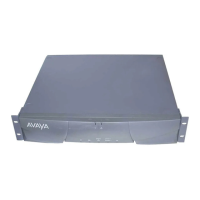Maintenance Architecture
555-233-143
1-4 Issue 1 May 2002
Alarm and Error Reporting
During normal operations, software, hardware, or firmware may detect error
conditions related to specific MOs. The system attempts to fix or circumvent
these problems automatically; but if a hardware component incurs too many
errors, an alarm is raised.
Alarm and Error Logs
The system keeps a record of every alarm that it detects. This record, the alarm
log, and the error log can be displayed locally on the management terminal. An
alarm is classified as major, minor, or warning, depending on its effect on system
operation. Alarms are also classified as ON-BOARD or OFF-BOARD.
■ MAJOR alarms identify failures that cause critical degradation of service
and require immediate attention. Major alarms can occur on standby
components without affecting service, since their active counterparts
continue to function.
■ MINOR alarms identify failures that cause some service degradation but do
not render a crucial portion of the system inoperable. The condition
requires attention, but typically a minor alarm affects only a few trunks or
stations or a single feature.
■ WARNING alarms identify failures that cause no significant degradation of
service or failures of equipment external to the system. These are not
reported to the Avaya alarm receiving system or the attendant console.
■ ON-BOARD problems originate in circuitry on the alarmed circuit pack.
■ OFF-BOARD problems originate in a process or component external to the
circuit pack.
Multiple alarms against a given MO can change the level of a given alarm as it
appears in the alarm log.

